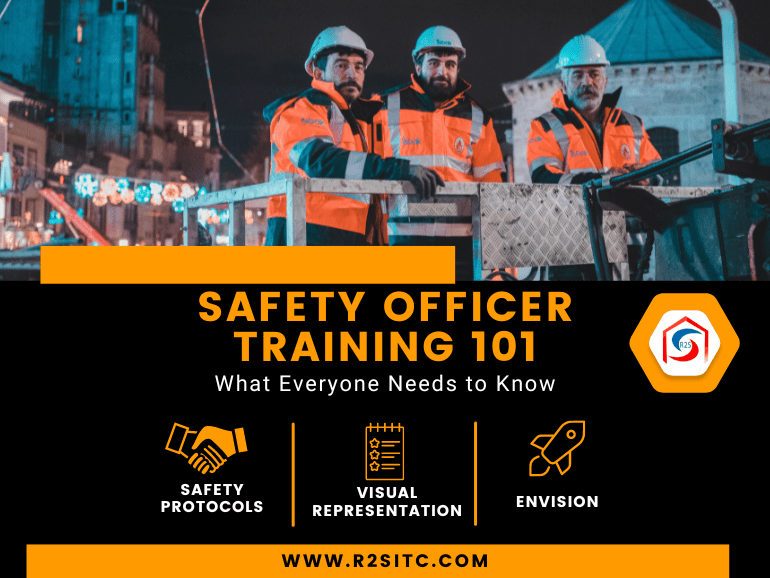Introduction:
Safety is a top priority in any organization, and safety officers play a crucial role in ensuring the well-being of employees and the implementation of effective safety protocols. Whether you’re considering a career as a safety officer or simply interested in understanding the basics of safety training, this blog post will provide you with a comprehensive overview of safety officer training. In collaboration with r2sitc, an esteemed institute specializing in safety education, we’ll delve into the essential knowledge and skills that every safety officer should possess.
The Role of Safety Officers:
Safety officers are responsible for identifying potential hazards, developing safety protocols, conducting risk assessments, and implementing strategies to ensure a safe working environment. They act as advocates for employees, ensuring compliance with safety regulations and fostering a culture of safety within the organization.
Importance of Safety Officer Training:
Proper training is vital for safety officers to effectively carry out their responsibilities. r2sitc Institute offers comprehensive safety officer training programs designed to equip individuals with the necessary skills and knowledge. Through a combination of theoretical and practical training, participants gain a deep understanding of safety principles, risk management, emergency preparedness, and regulatory compliance.
Essential Training Topics:
1. Safety Regulations and Standards: Safety officers must have a solid understanding of local and national safety regulations, such as OSHA guidelines. Training programs cover key regulations, ensuring officers are up to date with the latest standards.
2. Risk Assessment and Hazard Identification: Effective risk assessment is crucial for preventing accidents. Training provides officers with techniques to identify potential hazards, evaluate risks, and implement appropriate control measures.
3. Emergency Response Planning: Safety officers must be prepared to handle emergency situations. Training programs cover emergency response planning, including procedures for evacuation, first aid, fire safety, and crisis management.
4. Safety Inspections and Audits: Safety officers learn how to conduct comprehensive inspections and audits to identify safety gaps, assess compliance, and recommend corrective actions. These skills are essential for maintaining a safe working environment.
5. Communication and Training: Effective communication is vital for safety officers to convey safety procedures and educate employees. Training programs emphasize communication techniques and strategies to effectively engage and educate individuals at all levels of the organization.
The r2sitc Institute:
When it comes to safety officer training, r2sitc Institute is a leading authority. With a reputation for excellence, r2sitc offers comprehensive programs that align with industry standards and regulations. Their experienced instructors provide hands-on training, ensuring participants gain practical skills to excel in their roles as safety officers.
A Guide to Emergency Evacuation Protocols
Conclusion:
Safety officer training is crucial for maintaining a safe and productive work environment. Through comprehensive programs offered by reputable institutes like r2sitc, individuals can acquire the knowledge, skills, and confidence to effectively carry out the responsibilities of a safety officer. By prioritizing safety and investing in proper training, organizations can create a culture of safety and protect the well-being of their employees.


